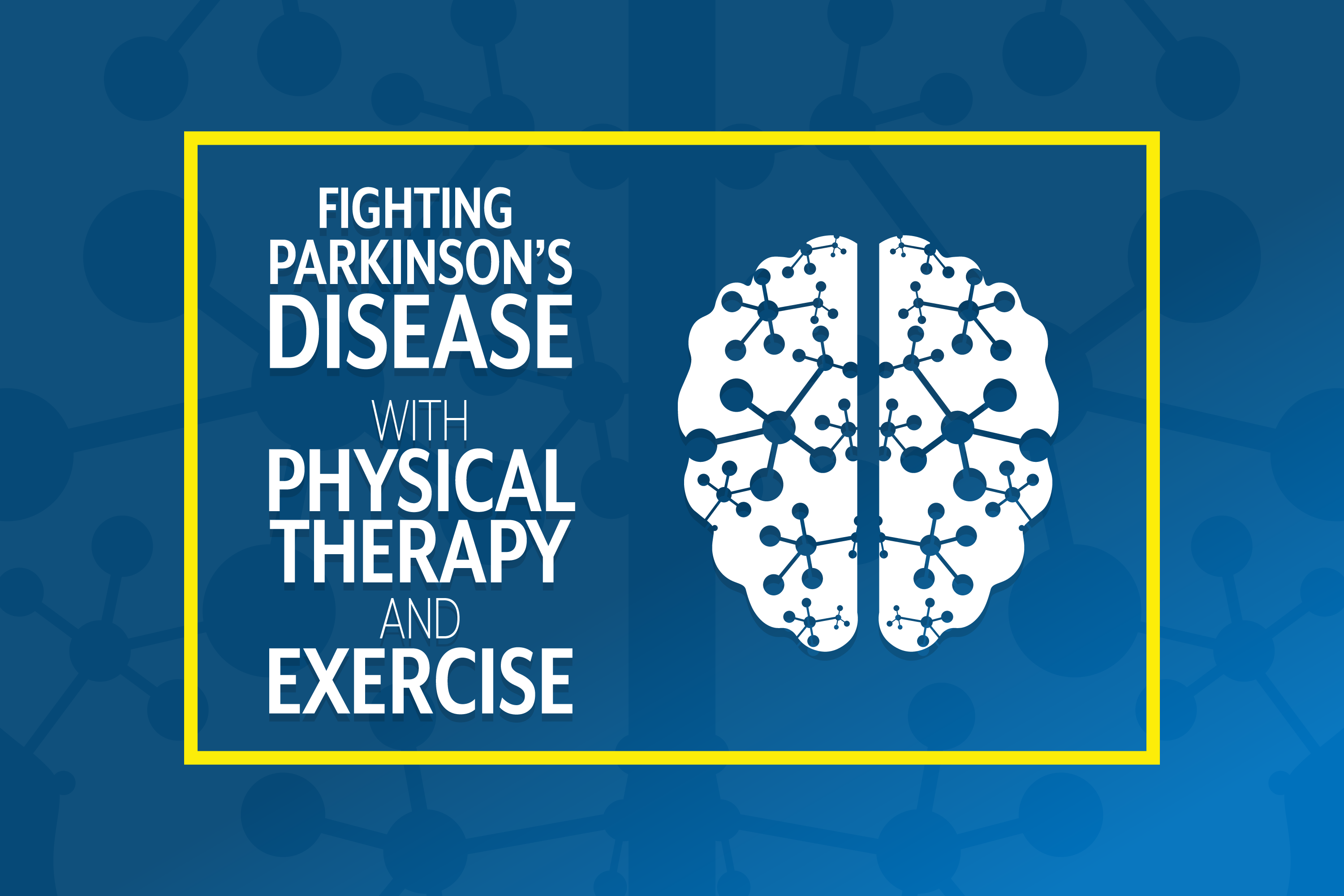1 million Americans are living with Parkinson’s Disease, and 60,000 people are newly diagnosed every year. In recognition of Parkinson’s Awareness Month, Spooner Desert Ridge”s Emily Baker, PT, DPT, CAFS, FAFS gave us some insight on what patients with Parkinson’s can expect during physical therapy and why exercise is a necessity in the fight against Parkinson’s.
What is the main difference with the treatment for patients with Parkinson’s Disease (PD)?
At Spooner Physical Therapy, we take a whole system, including neurological and muscular, approach for all of our patients at Spooner. For Parkinson’s, we are additionally looking to up-regulate a specific neurotransmitter (dopamine) that impacts movement quality, mood, cognition, and multiple other functions of daily living. We accomplish this through increasing the amplitude of the patient’s movements as well as increasing the amount of effort that is produced with all activities. Everything we do in physical therapy is intended to complement the care provided by their other providers, including what the patient’s medical doctors and possibly their neurologist/movement disorder specialists, are doing with medication and other interventions.
The rehab for Parkinson’s is life-long because the diagnosis is life-long. This includes a magnitude of education for patients and their loved ones on how to manage the progression of Parkinson’s in regards to continuing to move with intensity and large amplitude for all activities. We empower them to become independent in managing their progression as quickly as possible, but it is common to have recurring “tune ups” with their physical therapist to address different challenges as their presentation evolves.
What can patients with PD expect when working with a Spooner therapist?
They should expect a comprehensive assessment on their first day that includes a full system review, including mind, body, and spirit, that seeks to identify their individual impairments and treatment goals. Everyone with Parkinson’s presents differently and will present differently at different stages in their own disease progression. Beyond that, each individual has their own priorities. They should expect their treatment to be focused on active interventions, like exercise, because we are retraining the brain to move with the correct amplitude.
They can also expect a lot of repetition, such as daily exercise at home and often a more aggressive treatment frequency in the clinic. Why more visits in clinic in a week? Because part of the impact of having low dopamine makes it difficult to gauge appropriate movement amplitude, meaning movements are smaller. It can be harder for patients to make large enough or quick enough movements without a physical therapist’s assistance to make the desired neuromuscular changes. Committing to three to four visits with a therapist per week in the early stages can help jump start the dopamine uptake and result in more independence with home exercise more quickly and improve quality of movement throughout the day.
How do you approach implementing exercises in your treatment for patients with PD?
I always start with their goals. Any intervention should be directly driven by what my patients want to achieve. That being said, some general principles are:
- Bigger is Better – We are looking for bigger and faster movements than what will seem natural to most patients in order to improve the use of the neurotransmitter dopamine.
- Make Function Fun – We want to improve any safety/functional deficits and push patients WELL past their goal activity. We are always starting where a patient can be successful, and then we want to push past the goal activity. For example, the goal may be to get off a soft couch. This then turns into squatting while tossing a medicine ball. The goal activity of standing up from the couch is then relatively easy in comparison, and the movement speed/amplitude are appropriate.
- Practice like you Play – Plan and practice as many real-world challenges as possible, such as walking in a crowd, walking over a curb, walking on uneven ground, reacting to unexpected balance challenges, etc. This allows patients to perform these outside of therapy without hesitation or fear.
Have you or a loved one been diagnosed with Parkinson’s Disease? Our team of movement specialists are here to help, no matter what stage you may be in.
Learn more about Neurological Rehabilitation at Spooner Physical Therapy. Ready to schedule an appointment? Click here to schedule an appointment or complimentary movement screen with a Spooner physical therapist at one of our locations throughout the valley.

